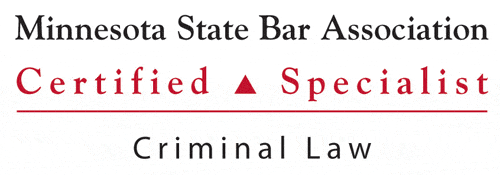
Many states have distinct charges for both assault and battery. The definitions vary from state to state, but generally speaking one charge involves the threat of violence (usually, but not always, assault), and one charge involves actual physical violence occurring (usually, but not always, battery).
In Minnesota, there is no such clear distinction between these two acts. If you threaten someone, it’s assault. If you physically harm them, that’s also assault.
However, there are quite a few degrees of assault charges based on the level of violence inflicted and the nature of the offense itself. Below, we’re going to cover the different degrees of assault in Minnesota and the penalties associated with each level.
Fifth Degree Assault
This misdemeanor charge applies when someone intentionally causes fear of imminent injury, attempts to inflict injury, or actually causes injury to a victim. The penalties for this charge are up to 90 days in jail, a fine of up to $1,000, or both.
The charge will be raised to a gross misdemeanor if a previous domestic violence offense occurred within the last 10 years or if a firearm was used in the assault. The penalties for that are up to one year in jail, a fine of up to $3,000, or both.
The charge will be raised to a felony if there have been two or more previous offenses against the same person within the last 10 years. The penalties are up to five years of imprisonment, a fine of up to $10,000, or both.
Fourth Degree Assault
This category exists to protect several different classes of people. Penalties range from gross misdemeanors to felony charges for an assault upon anyone who is serving in the following capacities:
- Certain employees of the Department of Natural Resources
- Correctional employees
- Crime prevention group members
- Emergency medical personnel
- Employees in a secure treatment facility
- Firefighters
- Peace officers
- Postal service employees
- Public employees
- Public transit operators
- Reserve officers
- School officials
- Utility employees
- Vulnerable adults
Vulnerable adults are individuals who receive inpatient or outpatient treatment, home care services, or those who are physically or mentally disabled and not able to defend themselves against mistreatment.
The law also protects against assaults that are bias-motivated, which can apply to range of different situations such as race, age, gender, or religion.
Third Degree Assault
Inflicting substantial bodily harm on someone else will result in this charge. The penalties are up to five years in prison, a fine up to $10,000, or both. Child abuse of a minor or certain injury to a child under the age of four will also fall under this category.
Second Degree Assault
Assault involving the use of a dangerous weapon will result in up to seven years of prison, a fine up to $14,000, or both. Assault that involves a dangerous weapon along with substantial bodily harm will be subject to up to 10 years in prison, a fine of up to $20,000, or both.
First Degree Assault

Assault that causes great bodily harm will result in a penalty of up to 20 years in prison, a fine of up to $30,000, or both. If an individual attempts to use or uses deadly force against a correctional employee, peace officer, judge, or prosecuting attorney while on duty, they will also receive the same sentencing. This individual will serve no less than 10 years in prison and is not eligible for probation or parole.
Making Sense of Your Minnesota Assault Charge
Confused yet? There are a lot of moving parts and legal definitions to understand where assault offenses are concerned.
If someone has filed assault charges against you, the best thing you can do to protect your rights and your future is to seek the help of an experienced attorney with a proven success record in defending clients with similar charges.
Every second matters. Contact us for a free case review today.
About the Author:
Christopher Keyser is a Minneapolis-based criminal and DWI defense attorney known for fighting aggressively for his clients and utilizing innovative tactics to get the most positive results. He has been featured in numerous media outlets due to the breadth and depth of his knowledge, and recognized as a Minnesota Super Lawyers Rising Star (2014–2015), a Top 100 Trial Lawyer (2013–2015), and a Top 40 Under 40 Attorney (2013–2015).





